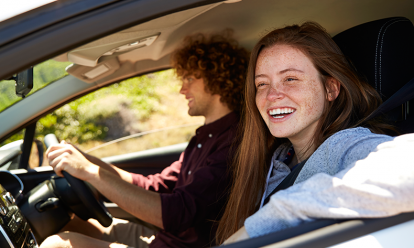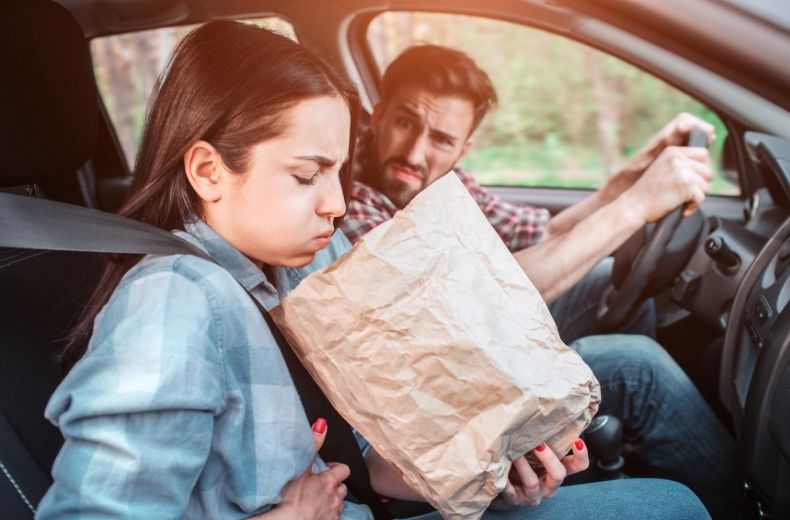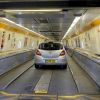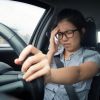Car sickness and nausea don’t just affect children, new RAC research has found, with as many as one in five people (18%) – the equivalent of 7.3m people* – not growing out of it and continuing to suffer as adults.
Those embarking on long car trips should be warned that sitting in the back seat of a car appears to be the worst place for motion sickness, with 75% of present sufferers saying that is the main place they feel queasy.

RAC sale – up to 33% off*
• Roadside cover from £5.29 a month†
• We get to most breakdowns in 60 mins or less
• Our patrols fix 4/5 breakdowns on the spot

Twelve per cent of those surveyed say being a front seat passenger brings on the unpleasant feelings, while for one in 20 it’s either driving or being a passenger that makes them feel unwell. Seven per cent say there is no pattern to their motion sickness.
The top reason people gave for feeling sick is reading in the car (61%), followed by using a tablet or phone (50%) – clearly things that should never be attempted as a driver. Nearly four in 10 (37%) blame winding country roads while a third (32%) say it’s a lack of fresh air that causes them to feel nauseous – with a similar proportion (30%) saying simply not looking out of the window can trigger the feeling.
More than a third of drivers (37%) say they have even had to take a break as a result of someone feeling unwell in the car, with 2% having to abandon journeys or even avoid them altogether.
While the vast majority of past and present sufferers (48%) have never sought medical help for motion sickness, more than one in 10 (13%) have either used over-the-counter medicine or an alternative remedy like using travel bands or eating ginger to try to alleviate the unpleasant symptoms. A desperate 2% meanwhile have turned to their doctor for help.
But a significant proportion (24%) say they have their own means of coping with the feeling of nausea, and rely on closing their eyes, trying to sleep or focusing intently on the horizon in order to feel better.
RAC spokesperson Rod Dennis said: “While car sickness is often associated with younger children, our research suggests it still remains a problem for a substantial number of older drivers and passengers.
“While people suffer from sickness to different degrees, there is a lot passengers in particular can do to reduce the chances of feeling unwell while on the move. Top of the list has to be cutting out reading a book or browsing a phone or tablet while a car is in motion, and using the well-known technique of looking out of the window and fixing on the horizon can be very effective in alleviating a sick feeling. But improving the in-car environment by ensuring plenty of fresh, and ideally cooling air is flowing can also help enormously – especially for people who sit in the rear seats on a long journey.
Black Box Insurance
Want to pay less for your car insurance? Whether you’re a new driver or just looking to reduce costs, we can help.


“A smoother driving style can also pay dividends – even if a driver doesn’t suffer sickness themselves, they could suffer some unfortunate consequences if they cause any of their passengers to become unwell simply because they are accelerating or braking too sharply. Driving too fast on windy country roads could be the perfect recipe to make other occupants feel queasy and could even lead to having to do a thorough deep-clean of the upholstery and carpet.
“Interestingly, our research also found that a small proportion (3%) of drivers say they suffer from potentially-debilitating migraines while in the car – something we would suggest sufferers talk to their GP about.”
The RAC research also found that nearly a quarter drivers (24%) said that they used to suffer from car sickness, but later grew out of the condition.
Top tips for reducing car sickness
Ditch the devices: If you’re travelling with children, it can be appealing to give them a tablet or phone to keep them occupied on a long journey – but they are much more likely to feel unwell if you do. Try some games that mean they need to keep looking out of the window, like I-Spy or Pub Cricket
Keep the air flowing: A quarter of current car sickness sufferers say it is a car being too hot and stuffy that makes them feel unwell. Use air conditioning, or keep the windows open, to create a better in-car environment for everyone
Have a light meal before travelling: A lack of food, as well as too much of it, can lead to car sickness so try to ensure you and your passengers set off with something in your stomachs
Drive smoothly, especially on country roads: Drive with a light right foot, braking and accelerating smoothly, to keep things comfortable for your passengers
Try to avoid winding routes: Where it’s possible, consider driving on wider, straighter roads that give all your occupants a good view of the horizon
Did you know, you can get fined for moving out of the way of an ambulance?
Want more useful content like this sent straight to your inbox?





